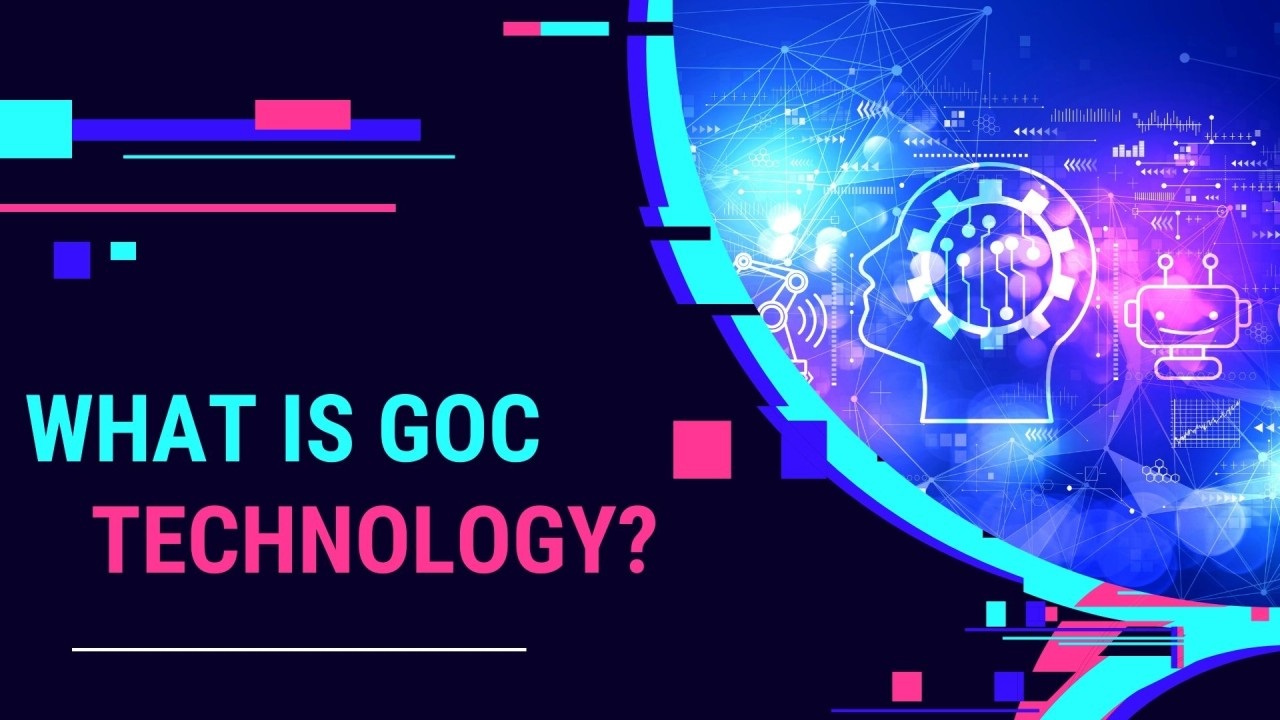
GOC Technology
Introduction
In an age characterized by rapid technological advancements, businesses and industries continually seek innovative solutions to streamline operations, enhance connectivity, and improve overall efficiency. One of the emergent concepts making waves in the tech world is GOC Technology. GOC, an acronym for Global Operations and Connectivity, represents a comprehensive suite of technologies and methodologies aimed at optimizing global business operations and fostering seamless connectivity across various platforms and geographies. This article delves into the intricacies of GOC Technology, exploring its components, benefits, applications, and future potential.
Table of Contents
Understanding GOC Technology
GOC Technology is a multi-faceted concept that integrates advanced technologies, strategic methodologies, and global connectivity frameworks to enhance operational efficiency and connectivity. It is built on the pillars of automation, data analytics, Internet of Things (IoT), artificial intelligence (AI), and robust communication networks. By leveraging these components, GOC Technology aims to create a unified and efficient operational environment that transcends geographical boundaries.
Key Components of GOC Technology
- Automation and Robotics: Automation plays a crucial role in GOC Technology by streamlining repetitive tasks, reducing human error, and increasing productivity. Robotics, both in physical and software forms, are employed to automate processes ranging from manufacturing to administrative tasks. This not only enhances efficiency but also frees up human resources for more strategic and creative endeavors.
- Data Analytics: The ability to collect, analyze, and interpret vast amounts of data is at the heart of GOC Technology. Advanced data analytics tools enable organizations to make informed decisions, predict trends, and identify opportunities for optimization. By leveraging big data, businesses can gain insights into customer behavior, market dynamics, and operational performance.
- Internet of Things (IoT): IoT devices and sensors are integral to GOC Technology, providing real-time data and connectivity across various touchpoints. IoT enables seamless communication between devices, systems, and platforms, facilitating remote monitoring, predictive maintenance, and efficient resource management.
- Artificial Intelligence (AI): AI algorithms and machine learning models are employed to enhance decision-making processes, automate complex tasks, and provide personalized experiences. AI-driven systems can analyze large datasets, recognize patterns, and offer recommendations, thereby improving operational efficiency and customer satisfaction.
- Communication Networks: Robust communication networks, including 5G and satellite technologies, form the backbone of GOC Technology. These networks ensure seamless connectivity and data transmission across different geographies, enabling real-time collaboration and information sharing.
Benefits of GOC Technology
The implementation of GOC Technology offers numerous benefits across various sectors. Some of the key advantages include:
- Enhanced Operational Efficiency: By automating processes and optimizing resource allocation, GOC Technology significantly improves operational efficiency. This leads to cost savings, reduced downtime, and increased productivity.
- Improved Decision-Making: Advanced data analytics and AI-driven insights enable organizations to make informed decisions based on real-time data. This enhances strategic planning, risk management, and overall business agility.
- Global Connectivity: GOC Technology fosters seamless connectivity across different regions and platforms, facilitating collaboration and communication. This is particularly beneficial for multinational corporations and remote teams, as it ensures continuity and coherence in operations.
- Predictive Maintenance and Reduced Downtime: IoT sensors and AI algorithms enable predictive maintenance by identifying potential issues before they escalate. This minimizes downtime, reduces maintenance costs, and extends the lifespan of equipment and machinery.
- Enhanced Customer Experience: Personalized experiences and efficient service delivery are key drivers of customer satisfaction. GOC Technology leverages data analytics and AI to understand customer preferences, anticipate needs, and provide tailored solutions, thereby enhancing the overall customer experience.
Applications of GOC Technology
GOC Technology finds applications across a wide range of industries, each leveraging its capabilities to achieve specific objectives. Some notable applications include:
- Manufacturing: In the manufacturing sector, GOC Technology is employed to automate production lines, optimize supply chain management, and enhance quality control. IoT sensors monitor equipment performance, while AI algorithms predict maintenance needs, ensuring smooth and efficient operations.
- Healthcare: The healthcare industry benefits from GOC Technology through telemedicine, remote patient monitoring, and personalized treatment plans. IoT devices collect patient data in real-time, enabling healthcare providers to deliver timely and accurate care. AI-driven diagnostics and data analytics enhance the accuracy of diagnoses and treatment outcomes.
- Retail: Retailers leverage GOC Technology to streamline inventory management, optimize pricing strategies, and enhance the customer shopping experience. Data analytics tools analyze customer behavior, enabling personalized marketing and product recommendations. Automated systems manage inventory levels, ensuring timely restocking and minimizing stockouts.
- Logistics and Supply Chain: GOC Technology plays a pivotal role in logistics and supply chain management by providing real-time visibility into shipments, optimizing routes, and reducing delivery times. IoT sensors track the location and condition of goods, while AI algorithms optimize routing and scheduling, ensuring efficient and timely deliveries.
- Energy and Utilities: In the energy sector, GOC Technology is used to monitor and manage energy consumption, optimize grid operations, and facilitate the integration of renewable energy sources. IoT devices collect data on energy usage, while AI algorithms analyze consumption patterns and optimize distribution, reducing energy waste and costs.
- Finance and Banking: The finance and banking industry leverages GOC Technology for fraud detection, risk management, and personalized financial services. AI algorithms analyze transaction data to identify suspicious activities, while data analytics tools provide insights into customer behavior, enabling personalized banking solutions.
Challenges and Considerations
While GOC Technology offers numerous benefits, its implementation is not without challenges. Some of the key considerations include:
- Data Security and Privacy: The collection and analysis of vast amounts of data raise concerns about data security and privacy. Organizations must implement robust security measures to protect sensitive information and comply with data protection regulations.
- Integration Complexity: Integrating GOC Technology with existing systems and processes can be complex and require significant investment. Organizations must carefully plan and execute the integration process to ensure seamless functionality and avoid disruptions.
- Skill Gap: The implementation of GOC Technology requires a skilled workforce with expertise in automation, data analytics, IoT, and AI. Organizations must invest in training and development programs to bridge the skill gap and ensure successful implementation.
- Cost: The deployment of GOC Technology can be costly, especially for small and medium-sized enterprises. Organizations must evaluate the cost-benefit ratio and prioritize investments based on strategic objectives.
The Future of GOC Technology
The future of GOC Technology is promising, with continuous advancements and innovations on the horizon. Some of the key trends and developments include:
- Edge Computing: Edge computing, which involves processing data closer to the source, is expected to enhance the capabilities of GOC Technology. By reducing latency and improving real-time data processing, edge computing will enable faster and more efficient operations.
- 5G and Beyond: The rollout of 5G networks will significantly enhance connectivity and data transmission speeds, enabling the seamless integration of IoT devices and real-time communication. Future advancements beyond 5G will further enhance the capabilities of GOC Technology.
- AI and Machine Learning: Continuous advancements in AI and machine learning will enable more sophisticated data analytics, predictive maintenance, and personalized experiences. AI-driven systems will become more autonomous, adaptive, and capable of handling complex tasks.
- Sustainability and Green Technology: As sustainability becomes a global priority, GOC Technology will play a crucial role in optimizing resource management, reducing energy consumption, and minimizing environmental impact. The integration of renewable energy sources and green technologies will be a key focus area.
- Blockchain Integration: Blockchain technology offers secure and transparent solutions for data management and transaction processing. Its integration with GOC Technology will enhance data security, traceability, and trust across various operations and transactions.
Conclusion
GOC Technology represents a paradigm shift in the way organizations operate and connect on a global scale. By integrating automation, data analytics, IoT, AI, and robust communication networks, GOC Technology offers unprecedented opportunities for enhancing operational efficiency, improving decision-making, and fostering global connectivity. While its implementation presents challenges, the potential benefits far outweigh the hurdles, making GOC Technology a critical driver of future innovation and growth.
As we move forward, continuous advancements and innovations in GOC Technology will pave the way for a more connected, efficient, and sustainable future. Organizations that embrace and leverage these technologies will be well-positioned to thrive in an increasingly competitive and dynamic global landscape.





